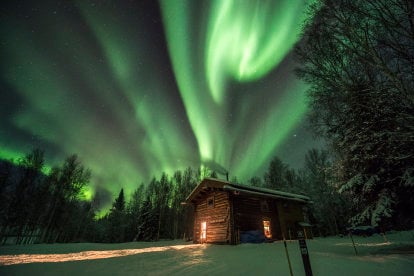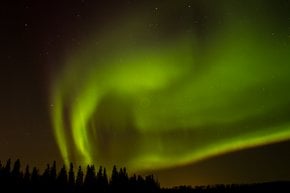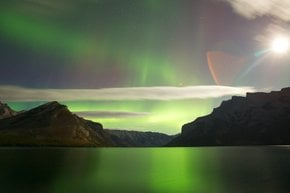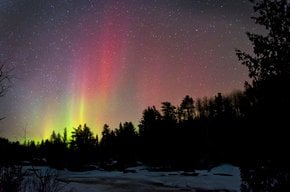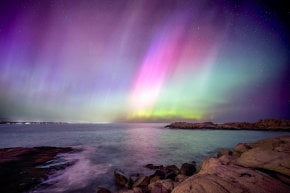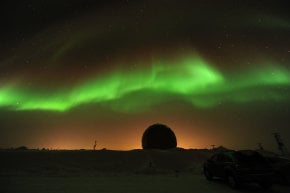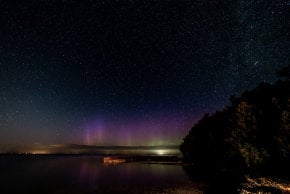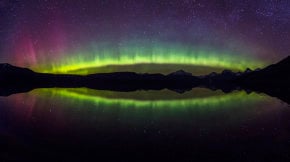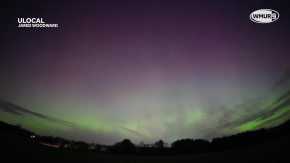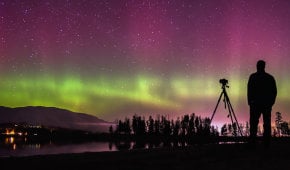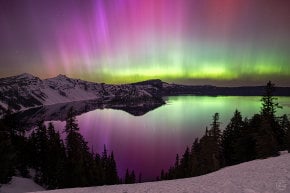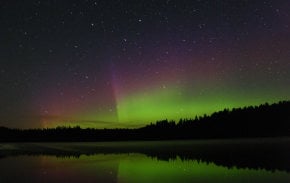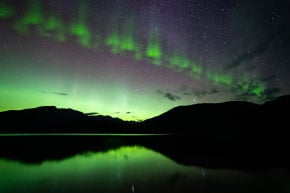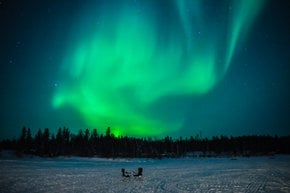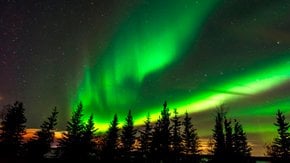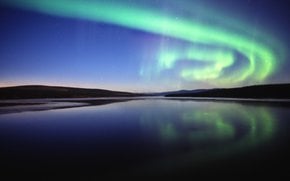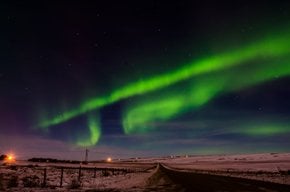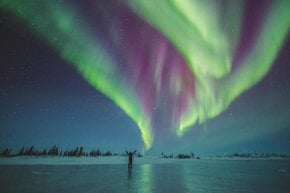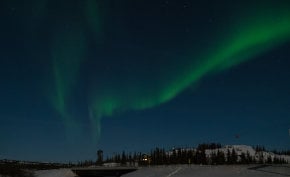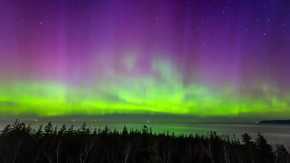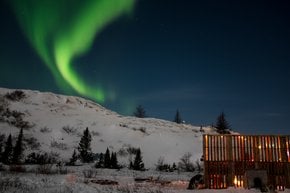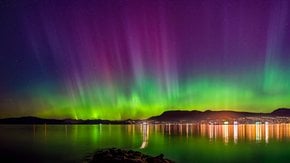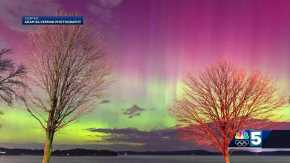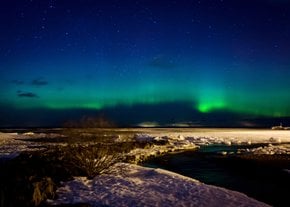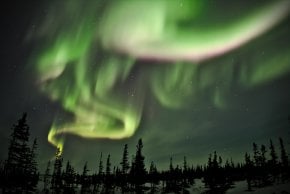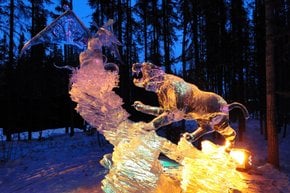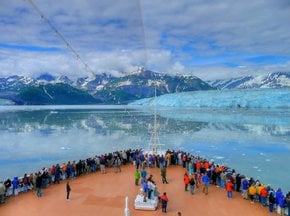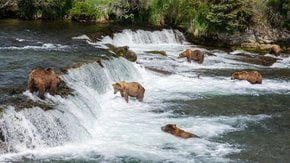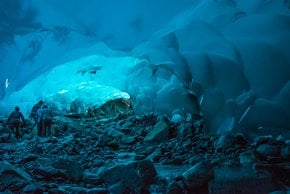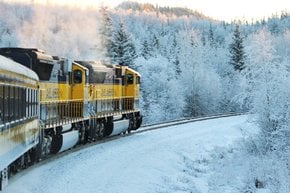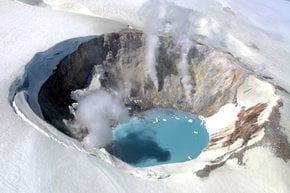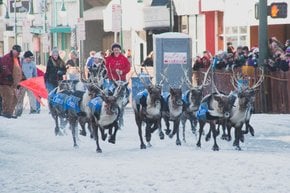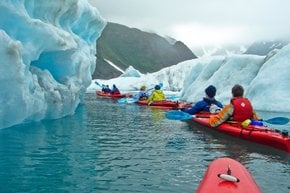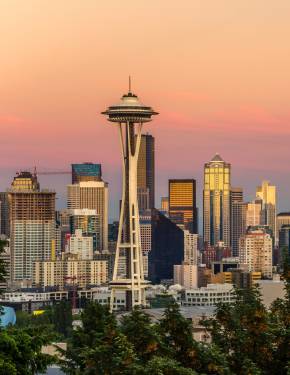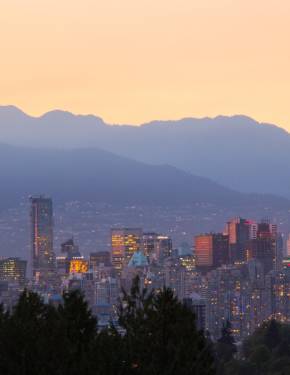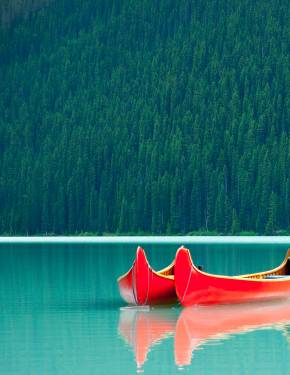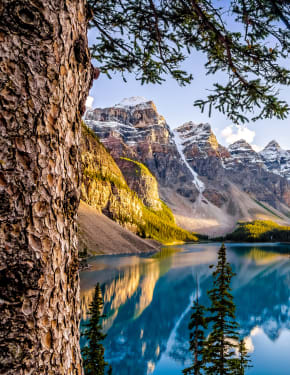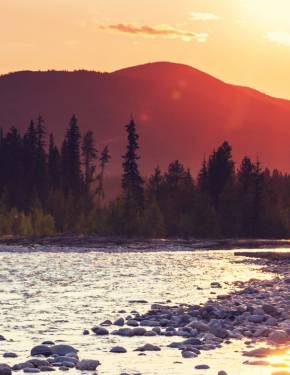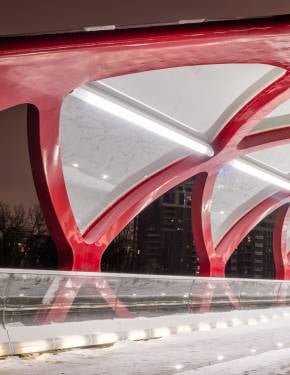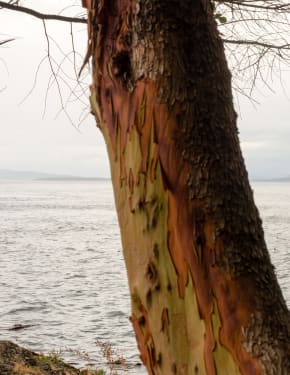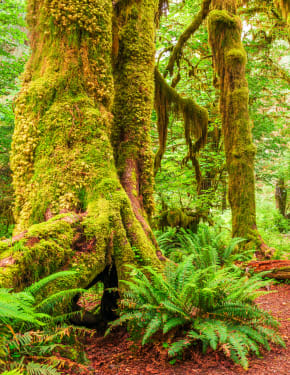Northern Lights in Alaska 2025-2026
Spanning under the "Auroral Oval," Alaskan Arctic belongs to the world's top locations to observe polar lights
Best time: late August–late April
The northern lights, or aurora borealis, are one of the most amazing things to witness in Alaska. Polar lights appear in the skies when charged solar particles interact with the atmosphere. The celestial show typically comes in a swirling array of green, while the most intense aurora gets a purple edge. The curious shapes range from curtains to bands, rays, and coronas.
When to view aurora borealis?
Northern lights dance across the sky all year round, but we are able to see it only on a dark and clear night. So the season stretches from late August through to late April. Winter being the best season is a myth. You can spot absolutely stunning aurora borealis displays in September or October, as well as March or April. The best time to look for the shimmering lights is between midnight and 2 am.
Where to see the northern lights?
The flickering lights can be spotted anywhere in the state, including its largest city of Anchorage, and other places in the south. However, the odds to see aurora displays there are dramatically lower than in the north. The chances strengthen when going up the latitude. Therefore, the remote inland Alaskan Arctic and the extreme north work the best.
Fairbanks
The most popular place for viewing the rare and spectacular phenomenon in Alaska is Fairbanks. Even though it's located just below the Arctic Circle, 180 mi (290 km) south to be more precise, the aurora borealis appears quite frequently there. A good place to head to in the vicinity is Cleary Summit Aurora Viewing Area, situated about 20 mi (32 km) north-east of Fairbanks. The area is easily accessible, offers a solid view of the horizon, and has parking, which is also convenient. Also, visit Chena Lakes Recreation Area to look for vibrant green reflections in the water. The area is also 20 mi away, but south-east of Fairbanks.
Coldfoot
At 67° N latitude and 60 mi (97 km) above the Arctic Circle, Coldfoot is the prime northern lights destination in the Alaskan Arctic. The former gold-mining settlement on the famed Dalton Highway from Fairbanks to Prudhoe Bay nowadays serves as a truck stop. You can find overnight accommodations at the rustic Coldfoot Camp set on the edge of the Gates of the Arctic National Park, which is the northernmost national park in the US. The camp operates year-round and offers other services, including a cafe, tour options, fuel, and minor tire repairs. If you're into more adventures, follow the road to Prudhoe Bay.
Nome
Nome is located on the Bering Sea coast, along the southern side of the Seward Peninsula. The town is best known for its Iñupiat culture and significance during the gold rush era. You don't have to travel far from Nome to see noprthern lights. The phenomenon is visible within 2 miles from the city. You can combine aurora chasing with Iditarod Sled Dog Race, held on the first Saturday of March, for a complete Alaskan experience.
Barrow (Utqiagvik)
To maximize your chances of seeing celestial lights in all their beauty, go to the extreme north. The best choice is Barrow, also called Utqiagvik. The northernmost town in the US is also home to the native Iñupiat Eskimo culture. You can get there by Alaska Airlines departing from Anchorage and arriving at the town's Wiley Post-Will Rogers Memorial Airport. Otherwise, you can opt for a tour package.
Denali National Park and Preserve
If you dislike the idea of the extreme north, national parks provide an alternative. Denali National Park is about a three-hour drive southwest of Fairbanks. The key benefits are low light pollution and a picturesque landscape that includes Denali or Mount McKinley, the highest mountain peak in North America. With over 6 million acres (nearly 2.5 million ha) of wild nature, there are plenty of stunning views in the national park.
Tips for viewing northern lights
To predict the visibility and intensity of the aurora borealis in your area, you need to follow an aurora forecast. Apps are available in Google Play and App Store that can send alerts when aurora is visible. One of the most reliable sources for northern lights forecasts is the Space Weather Prediction Center of the National Oceanic and Atmospheric Administration. It's a good tool for a short-time prediction. Also, keep in mind that a quiet aurora display is best viewed through a camera, which can gather more light than the naked eye. A general recommendation to aurora hunters is to dress warmly and wear layers. Rely on synthetic, fleece, and wool materials. It would be sad if you have to watch a polar show from the inside because of the unbearable cold.

